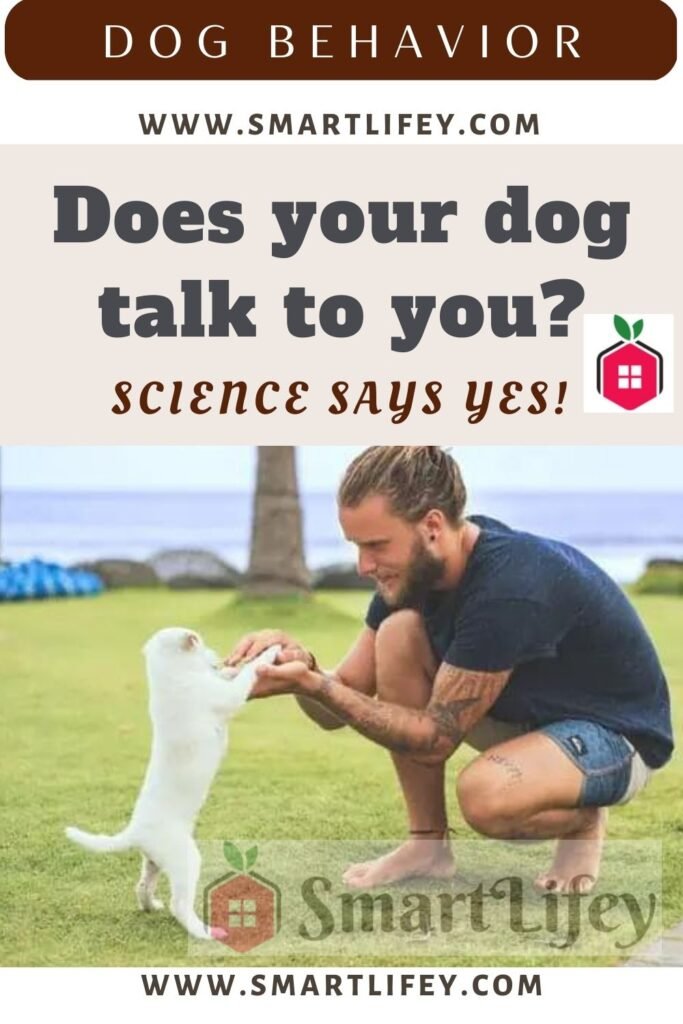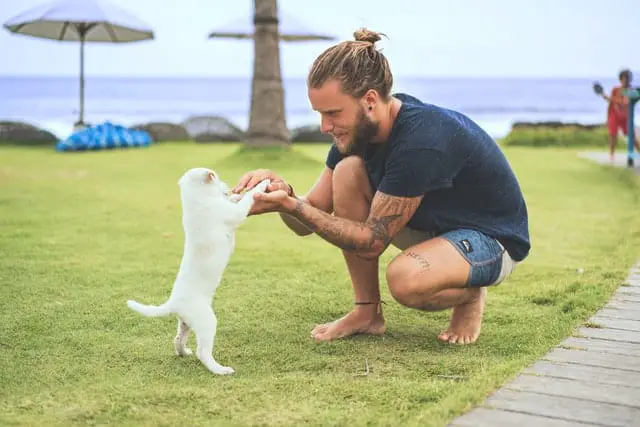Dogs’ facial gestures, such as raising their eyebrows and widening their eyes, are used to communicate with humans, recent research confirms.

Are you among those who think that dogs just need to talk? Well, science has provided some compelling reasons to support this belief. Dogs make many facial gestures with the sole purpose of communicating with us. But how do dogs use their faces to interact with people? What is the gesture that you repeat the most when trying to say something? And the other way around: do dogs also actively listen when someone talks to them? Here are all the answers to these interesting questions.
Dogs speak to us
Do you think your dog just needs to talk ? Well, if so, science has provided some compelling reasons that support this suspicion. Dogs use more facial expressions when humans look at them in a clear attempt to communicate with us.
Dogs are sensitive to the attention received from people, and their facial gestures appear to be active attempts to communicate with us; therefore, they are much more than simple responses to a feeling of sadness or joy, as we have thought so far.
How do dogs talk to us? With that irresistible doggy look
Scientists have studied the reactions and facial expressions of a total of 24 dogs of various breeds, ranging in age from one year to 12 years. They all live with families, therefore they are used to interacting with people on a daily basis.
What have they discovered? Researchers have been able to find out that there are certain facial gestures that dogs repeat and that they use frequently when they want to communicate with people. And what is the most used facial expression when trying to address your humans? The quintessential gesture is the canine eyebrow lift, also known as “putting doggy eyes” , and whose visible result is an apparent increase in the size of the eyes.
The fact that people react to these expressions reinforces that the dog uses them when trying to communicate. And what happens when a furry friend makes “doggy eyes”? “This canine facial gesture usually has an almost immediate empathic response in people. In other words: that gaze captures the human’s attention, who also reacts to it in a positive way, so the animal soon learns that these “doggy eyes” work to communicate.
The question now is whether dogs also use a display of facial expressions when in front of a plate of food. The answer, however, is negative. Dogs do not make more facial expressions when they see food, so the researchers conclude that these irresistible facial gestures and doggy looks are not the result of excitement, but rather have the main objective of communicating with us.
“We are in a position to confidently state that dogs use facial expressions to communicate with their human audience, and that these gestures and looks are not the result of the sheer emotion or excitement of the moment.” In addition, the gestures that dogs make with their faces are more numerous and rich when there is a human looking than when there is not.
Why do dogs turn their heads when spoken to?

Dogs have lived with humans for about 30,000 years. And during all this time the dogs have learned not only to communicate with people, but also to listen to them, listen to what they say and try to understand them.
And as proof of this, the following scene: we talk to the dog and, suddenly, the furry friend tilts its head. This sequence will not surprise those who have lived with a dog, as six out of ten dogs bow and shake their heads when spoken to. This movement aims to better listen to what they are told. In other words, the furry friend would move its head to adapt its outer ears to the direction of the human voice and thus hear it better .
And there are still more. The number of dogs that tilt their heads when spoken to, in order to hear better, grows as the size of the muzzle increases. Seven out of ten dogs with large muzzles (worse for vision, due to their greater length) bow their heads in a habitual way when something is said to them. What is the reason? It’s harder for these furry friends to read people’s lips without bowing their heads.
